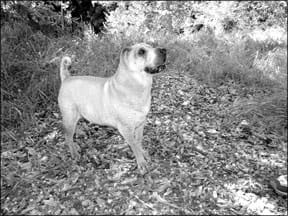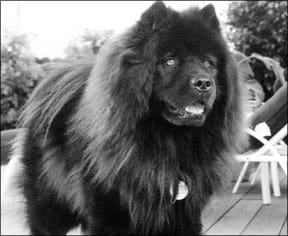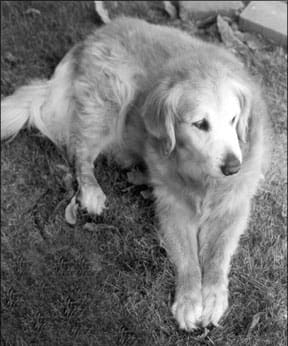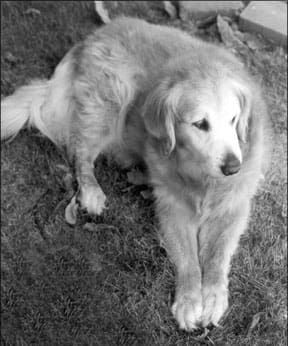We all want our dogs to enjoy the highest quality of life for the longest possible time. Proper diet, adequate exercise, weight control, appropriate supplements, and good veterinary care can all help our dogs remain active and vibrant well into their senior years.
Nutrition can make a significant difference in how long our dogs live, and how healthy they remain as they age, but there are a lot of misconceptions about what type of diet is best for older dogs.
Fundamental principles widely accepted in the past have been discredited by research done in the past 15 years. This research has revolutionized what we know about canine nutrition and profoundly changed our ideas about what older dogs need, not just to survive, but also to thrive and be as healthy as possible. It takes time, though, for this new knowledge to filter down into the veterinary, pet food, and pet owner communities.
Protein for senior dogs
Here’s a quiz: which of the following are the most important reasons for feeding a lower protein diet to senior dogs?
A: Senior dogs need less protein than younger adult dogs.
B: Lower protein diets help to protect the kidneys, especially in older dogs.
C: Replacing protein with carbohydrates helps to prevent older dogs, who may be less active, from gaining weight.
D: Carbohydrates help dogs being fed a lower calorie diet feel full, so they won’t be hungry and crave more food.
Answer: None of the above.
The truth is that there is no reason to feed a lower protein diet to senior dogs.

288
While lower protein diets have traditionally been recommended for senior dogs based on assumptions such as those above, we now know that a protein-rich diet is especially important for older dogs, due to the fact that their systems are less efficient at metabolizing protein. Recent studies show that healthy older dogs may need as much as 50 percent more protein than their younger adult counterparts.
Protein is valuable for many reasons: it supports the immune system and the central nervous system, contributes to wound healing, helps build lean muscle, and is required for skin and coat health. When dogs are not fed enough protein, their bodies will break down their own muscle tissue to get what they need, leading to muscle wasting and other serious problems. Even mild protein deficiency can significantly impair immune function. Dogs who get too little protein are also more susceptible to stress, including stress from injury or infection.
But what about the kidneys? Doesn’t a low protein diet lessen the workload on the kidneys and help protect older dogs from kidney disease?
Again, the answer is no. Research done on dogs has now proved that protein does not damage kidneys, and feeding a lower protein diet does not protect them. In fact, senior dogs fed high protein diets live longer and are healthier than those that are fed low protein diets, even when one kidney has been removed. Studies conducted at the University of Georgia in the 1990s demonstrated that feeding protein levels of 34 percent (on a dry matter basis; see sidebar, below) to older dogs with chronic kidney failure and dogs with only one kidney caused no ill effects.
These same studies did raise the issue of whether low-protein diets may cause harm. The mortality rate was greater for the dogs fed 18 percent protein than for the ones fed 34 percent protein. Another study done on dogs with only one kidney showed that protein levels up to 45 percent of the diet had no harmful effect on the remaining kidney.
My own dog Nattie, who was diagnosed with early kidney disease at age 14, actually improved over the next two years on a diet that was more than 36 percent protein on a dry matter basis, before I lost her to problems unrelated to kidney failure.
More myths busted
The same is true of liver disease. Although low protein diets were recommended in the past for dogs with liver disease, recent research has found that protein is required for a healthy liver and a low protein diet can be harmful to dogs with liver disease. The only time that protein needs to be restricted is when hepatic encephalopathy (neurological problems caused by excess ammonia) is present.
So, if a lower protein diet is not necessary or desirable for health reasons, what about weight loss? Won’t lowering protein and increasing carbohydrates help prevent an older dog from becoming overweight? Doesn’t a diet high in carbs, such as grains and vegetables, help a dog on a low calorie diet feel fuller? Once again, the answer is no.
Protein and carbohydrates supply exactly the same number of calories: four calories per gram. Replacing protein with carbohydrates does nothing to reduce calories, but it does reduce nutrition.
Dogs have no nutritional need for carbohydrates, as even the veterinary textbooks admit. Diets high in carbohydrates contribute to inflammation, which increases arthritis pain, and can cause medical problems, including obesity and maldigestion.
It is far better to feed protein, which dogs efficiently convert into energy as well as muscle, than to feed carbohydrates, which are more likely to be converted to fat. In one study, 26 English Pointers ranging in age from 7 to 9 years were fed either 15 percent or 45 percent protein over several years. The dogs fed the high protein diet maintained a higher percentage of lean body mass and a lower percentage of body fat.
It is also likely that protein helps to satisfy the appetite more than carbohydrates do. Several studies done on people have shown that high protein diets reduce appetite, and a recent study found that meat, eggs, and cheese trigger a protein that makes us eat less.
While the pet food companies have added indigestible fiber to “bulk up” their foods so the dogs would supposedly feel fuller on a lower calorie diet, this turned out not to be true. A study done on dogs by the Waltham® Centre for Pet Nutrition concluded that the addition of soluble or insoluble fiber had no beneficial effects on satiety (feeling full), nor did they increase weight loss.
In Canine and Feline Nutrition, authors Case, Carey, and Hirakawa state, “Diets that contain increased levels of indigestible fiber and reduced levels of protein are not recommended for weight loss or for long-term weight maintenance of sedentary dogs and cats. If a diet is simultaneously high in indigestible fiber and low in fat and/or other nutrients, it is possible that long-term feeding may result in nutrient deficiencies in some animals.”
A family of Chows
Southern California resident Mindy Fenton, owner of the SeniorRawFeeding list on Yahoo, has raised several Chows, a breed that normally lives to between 10 and 12 years of age. Of Mindy’s last three dogs (none of whom were related to each other), two passed away while still extremely healthy at age 14 (one due to pet sitter negligence and the other to a fat embolism following surgery for a broken leg). The third dog, Maggie, lived to age 16 before passing away naturally on her own.

244
These were not dogs who were simply “existing” in their very advanced years; they had clear eyes, perfect hearing, and far more energy than many dogs half their age.

244
Even in their last years, these dogs had tremendous vitality, still racing around the house, jumping on furniture, and pulling to go faster during their walks. At the beach, Mindy and her husband could hardly keep up with the dogs, who would still run with the wind. People who met Mindy’s senior dogs could never guess their age. We should all be so lucky in our advanced years!
Mindy attributes her dogs’ ongoing vitality to feeding a high-protein raw diet. While we sometimes see dramatic changes in younger dogs who are switched to a raw diet, she believes the real payoff comes during a dog’s senior years after having been fed a raw food diet for many years. Common sense tells us that when a dog has eaten a lifetime of species-appropriate food, inherently his body is going to function better during those latter years.
Even dogs who are switched to a raw diet at an older age will benefit. Maggie, the Chow who lived to 16 years old, was nine years old when Mindy originally began feeding a raw diet. My oldest dog was 13 when I made the switch in 1998. While he lived only one more year, he became completely allergy-free during that year, after suffering from environmental allergies most of his life.
Mindy fed her senior dogs exactly the same diet as her young adult dogs. Specifically, her dogs eat a wide variety of proteins including chicken, turkey, beef, lamb, venison, buffalo, tripe, ostrich, quail, and duck. She use a mixture of ground raw food (meat, bones, and/or organ meat) and whole bones, extras such as eggs and dairy, plus organic vegetables that consist of no more than about 10 percent of the overall diet. Needless to say, her dogs eat a very high protein diet, which is consistent throughout their lives.
Weight control
All in all, there is nothing to be gained and much to lose by feeding a reduced protein diet to older dogs. Other dietary changes, however, may be beneficial. As dogs age, they usually become less active, and may put on weight if fed as many calories as they received when they were young.
It is important to keep older dogs lean and not let them get fat; overweight contributes to joint problems that may slow them down even more. This can create a vicious cycle, and make it difficult to return them to a normal weight.
To control weight, you can feed your dog less of his regular diet, or look for ways to reduce the fat if you are feeding a high-fat diet. Fat supplies 9 calories per gram, compared to 4 calories per gram supplied by protein and carbohydrates.
Limit the dietary fat to moderate levels for inactive dogs, but don’t feed a low-fat diet, which will make your dog feel hungry and crave more food. Fats are needed to maintain healthy skin and coat, support the immune system, and transport fat-soluble vitamins, so it is important not to reduce fat to levels that are too low.
Senior dogs who are underweight may benefit from a higher-fat diet, particularly because fat makes food more palatable, which may encourage them to eat more.
My dog, Piglet, will be 15 years old this month. She has severe arthritis in both elbows, which has slowed her considerably from her younger years, though she still takes one to two-hour walks every day. Piglet is fed a raw, home-prepared diet similar to what is described above. I continue to feed the same foods that I did when she was younger, but I have reduced the quantity that she gets, and I now remove visible fat from the meats and chicken backs and necks I feed her. I also remove some of the skin, which is where most of the fat in poultry is found.
I feed low-fat yogurt and cottage cheese rather than the whole milk varieties that I used to give her when she was younger. Her diet is not low fat, but it’s considerably lower than it was when she was more active and burned off calories more easily. In Piglet’s case, I use a scale to help me control her portion sizes. Due to her arthritis, it is critical that I keep her lean so that her bad joints don’t have to support any more weight than they must. I found that when I eyeballed her portions, she tended to gain weight. I purchased an inexpensive postal scale from an office supply store and now I weigh all of her food. The scale also makes it easy for me to adjust her diet if she begins to put on weight.
It is important when reducing the amount of food that you feed to do so gradually, in increments of about 10 percent or so every one to two weeks, until you begin to see slow, gradual weight loss. Once you reach that point, continue to feed the same amount as long as the weight loss continues, decreasing further only if your dog stops losing weight but still has some extra pounds to lose.
If you try to reduce the amount fed too quickly, the body will go into “starvation mode,” which changes the metabolism and makes weight loss more difficult. Slow and gradual weight loss is healthier.
If you feed a dry or canned diet, look for varieties that are moderately lower in fat and calories for your overweight or less active senior, while maintaining protein levels of at least 25 percent on a dry matter basis (see sidebar).
Unfortunately, the majority of senior and weight loss diets on the market are high in carbohydrates, sometimes using indigestible fiber such as peanut hulls to “bulk up” the food without adding calories. This does nothing to satisfy your dog’s appetite, despite the manufacturers’ claims to the contrary, and provides no nutrition; avoid those foods.
Exercise is also important for keeping your older dog fit and at the proper weight. Exercise should be increased gradually, as your dog becomes accustomed to it. Don’t push your dog past his comfort level, to the point where he is more tired or sore the next day. Two or three short walks may be easier than one long one. It’s a good idea to have your vet do a routine exam before beginning a diet or exercise regime.
Remember that weight gain can be related to physical problems such as hypothyroidism, Cushing’s disease (particularly if appetite has also increased), arthritis, and more. Your vet can help identify any conditions that may require treatment or restricted exercise.
Commercial senior diets
Happily, there are some newer senior diets on the market that do not feature decreased protein levels. This seems to be particularly true of large breed senior foods, probably because these formulas were developed more recently.
For example, Innova has two new senior dry foods: Large Breed Senior, which is 26 percent protein (as fed), and Senior Plus with 24 percent protein (as fed). Innova’s older product, Innova Senior, is 18 percent protein (as fed), which is much lower than I would recommend.

278
I see no reason why the higher-protein large breed formulas cannot be used for all dogs, as the main difference between them appears to be the addition of glucosamine for joint problems, which can benefit small dogs as well.
As with all commercial foods, there is a big difference between the high quality senior diets and the lower quality brands, which may have higher protein levels but are using poor quality plant proteins to achieve them. Avoid foods that contain corn gluten meal, a waste product from the human food industry that provides incomplete proteins for dogs. Its appearance, especially high on the ingredients list, is a hallmark of lower quality food.
High-quality foods have high percentages of protein from animal sources. If overweight is a concern, look for products that contain moderately reduced levels of fat – around 10 to 14 percent (as fed) for dry foods and 4 to 7 percent (as fed) for wet foods; less than that is excessively low in fat. For more tips on selecting high quality foods, see “Moist and (Probably) Delicious,” January 2006 and “The Right Stuff,” February 2006.
In addition to Innova Large Breed Senior and Senior Plus mentioned above, other senior diets that have higher percentages of animal proteins include Eagle Pack’s Holistic Select Senior Care Formula, Chicken Soup for the Pet Lover’s Soul Senior Dog Formula (canned and dry), and Champion Petfoods’ ACANA Senior Light and Orijen Senior (made in Canada). Innova EVO now offers a high-protein, reduced fat version.
This is by no means a complete list of high-quality, commercial senior foods, and the number should increase as the knowledge that senior dogs benefit from high protein levels becomes more widespread. Remember that there is no need to feed a senior diet; it is fine to continue to feed foods approved for adult dogs or for all life stages.
Rather than trying to find a single, “best” food, choose at least two or three different brands, using different protein sources, and rotate between them every few weeks or every few months. Variety is always better than feeding any single food, as it helps to guarantee that all your dogs’ nutritional needs are met and is more interesting for your dogs.
It’s also a good idea to add some fresh foods to the diet, no matter what you feed, such as eggs and meat (raw or cooked), canned fish with bones (jack mackerel, pink salmon, sardines), dairy (yogurt, kefir, cottage cheese), and healthy leftovers. These foods can also be used to increase protein levels in a diet that might otherwise be too low.
Supplements for senior dogs
Some commercial senior diets, particularly those designed for large breeds, have added glucosamine for dogs with arthritis. This is fine, but if you have a dog with arthritis, it is best not to rely on diet to provide the glucosamine and related ingredients that can help to rebuild cartilage and restore synovial (joint) fluid.
Instead, give a glucosamine-type product separately. Start with high doses so that you will be able to tell whether or not your dog responds. If you see improvement, reduce the dosage to see if the improvement can be maintained on a lower dose.
If you don’t see any change within three to four weeks, try another supplement. Different dogs respond differently to the various supplements.
Some brands that have worked for dogs I know include Arthroplex from Thorne Research, Syn-Flex Glucosamine Complex, DVM Pharmaceuticals’ Synovi-G3, B-Naturals’ Flexile-Plus, and Liquid Health K-9 Glucosamine. You can also use products made for people that contain ingredients such as glucosamine, chondroitin sulfate, green-lipped mussel (perna canaliculus), and hyaluronic acid. The use of manganese in the supplement may help with absorption.
Commercial senior diets also often contain antioxidants, which help to fight damage caused by free radicals and may reduce cancer risk. Antioxidants are provided by some vitamins and minerals, including vitamins C, E, and A, carotenoids such as beta-carotene, and selenium, found mainly in fruits and vegetables. Other antioxidants include CoQ10, alpha-lipoic acid, lutein (which may help to prevent cataracts), and pycnogenol.
While adding antioxidants to commercial foods is a good idea, it is questionable how much value these additions to the foods offer. Dry foods in particular can have a very long shelf life, and lose some vitamins to degradation over time.
It may be more productive to add an antioxidant supplement, whether or not you feed a diet containing them. Suggested brands include Cell Advance 440 and 880 from Vetri-Science, and Small Animal Antioxidant from Thorne Research.
Herbs can also be helpful for senior dogs. Both of my seniors responded well to Animals’ Apawthecary’s Senior Blend, for example. Tasha’s Herbs also makes a Senior Support supplement. Invigor from The Honest Kitchen, Organic Green Alternative from Animal Essentials, and Genesis Resources Canine Antioxidant Formula are whole food herbal supplements that provide antioxidants and other benefits.
When is a dog a senior?
There is a chart in my vet’s office that compares dog ages to human ages. It shows the first year of a dog’s life being equivalent to 15 years in human terms, the second year equivalent to 24 years, and then they add 4 dog years to each human year after that.
This timeline is fairly accurate for a medium-sized dog, though larger breeds age faster and smaller dogs more slowly, once adulthood has been reached. The part that makes me chuckle is their division of the chart, showing middle age starting at 4 years (equivalent to a 32 year old person), and senior classification beginning at age 7 (equivalent to a 44 year old person). Can you imagine how you would feel if you were told you were a senior at age 44? A giant breed dog, such as a Great Dane, may be a senior at age 7, but many smaller breeds would still be in their prime of life.
So, when is a dog a senior? Is it when they start slowing down, becoming less active, sleeping more? While these things may come with age, they are often symptoms of conditions that can be treated and sometimes cured. Never assume that your dog is slowing down or sleeping more just because he’s getting older.
Arthritis may be decreasing his activity, but arthritis can be treated, both by natural methods that include weight loss and supplements, and by anti-inflammatory drugs when needed, so that your dog can continue to be active and enjoy his life as long as possible.
Sleeping more is often a symptom of pain and should never be dismissed as simply a sign of aging. Have regular vet checks done on older dogs, and discuss any changes you’ve noticed with your vet. If you see any sudden changes in activity level, sleeping habits, weight or appetite, etc., see your vet right away.
I’ve been surprised at how many signs of “aging” actually improve with proper care. Piglet’s arthritis has slowed her down, but I’ve continued to try different supplements and medications, and several have made a significant difference. For example, her lameness increased at age 11, but she improved when I added dl-phenylalanine (DLPA), an amino acid used to treat chronic pain. I use Thorne Veterinary’s Arthroplex, which includes DLPA, because it makes it easy to give the proper dosage for a medium-sized dog; you can use human DLPA supplements for larger dogs.
Piglet’s activity level also increased and she began taking much longer walks after she had a broken tooth removed. Teeth become more brittle with age, so even if your dog has never had problems with broken teeth before, you may find yourself dealing with them when your dog gets older.
We can’t stop our dogs from aging or make them live forever, but we can do a lot to ensure that they live the longest and healthiest lives possible. We can help our older dogs to enjoy their senior years with protein, exercise, weight control, supplements, and good veterinary care.
Mary Straus does research on canine health and nutrition topics as an avocation. She is the owner of the DogAware.com website. She lives in the San Francisco Bay Area with her 14-year-old dog, Piglet.





